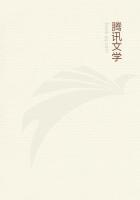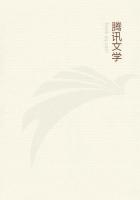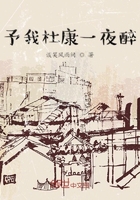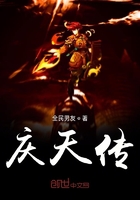The Osmia's shells can be recognized at once, as being closed at the orifice with a clay cover. The Anthidium's call for a special examination, without which we should run a great risk of filling our pockets with cumbersome rubbish. We find a dead Snail-shell among the stones. Is it inhabited by the Resin-bee or not? The outside tells us nothing. The Anthidium's work comes at the bottom of the spiral, a long way from the mouth; and, though this is wide open, the eye cannot travel far enough along the winding stair. I hold up the doubtful shell to the light. If it is completely transparent, I know that it is empty and I put it back to serve for future nests. If the second whorl is opaque, the spiral contains something. What does it contain? Earth washed in by the rain? Remnants of the putrefied Snail? That remains to be seen. With a little pocket-trowel, the inquisitorial implement which always accompanies me, I make a wide window in the middle of the final whorl. If I see a gleaming resin floor, with incrustations of gravel, the thing is settled: I possess an Anthidium's nest. But, oh the number of failures that go to one success! The number of windows vainly opened in shells whose bottom is stuffed with clay or with noisome corpses! Thus picking shells among the overturned stone-heaps, inspecting them in the sun, breaking into them with the trowel and nearly always rejecting them, I manage, after repeated attempts, to obtain my materials for this chapter.
The first to hatch is the Seven-pronged Resin-bee (Anthidium septemdentatum). We see her, in the month of April, lumbering along to the rubbish-heaps in the quarries and the low boundary-walls, in search of her Snail-shell. She is a contemporary of the Three-horned Osmia, who begins operations in the last week of April, and often occupies the same stone-heap, settling in the next shell. She is well-advised to start work early and to be on neighbourly terms with the Osmia when the latter is building; in fact, we shall soon see the terrible dangers to which that same proximity exposes her dilatory rival in resin-work, Anthidium bellicosum.
The shell adopted in the great majority of cases is that of the Common Snail, Helix aspersa. It is sometimes of full size, sometimes half-developed. Helix nemoralis and H. caespitum, which are much smaller, also supply suitable lodgings; and this would as surely apply to any shell of sufficient capacity, if the places which Iexplore possessed others, as witness a nest which my son Emile has sent me from somewhere near Marseilles. This time, the Resin-bee is settled in Helix algira, the most remarkable of our land-shells because of the width and regularity of its spiral, which is copied from that of the Ammonites. This magnificent nest, a perfect specimen of both the Snail's work and the Bee's, deserves description before any other.
For a distance of three centimetres (1.17 inches.--Translator's Note.) from the mouth, the last spiral whorl contains nothing. At this inconsiderable depth, a partition is clearly seen. The moderate diameter of the passage accounts for the Anthidium's choice of this site to which our eye can penetrate. In the common Snail-shell, whose cavity widens rapidly, the insect establishes itself much farther back, so that, in order to see the terminal partition, we must, as Ihave said, make a lateral inlet. The position of this boundary-ceiling, which may come farther forward or farther back, depends on the variable diameter of the passage. The cells of the cocoons require a certain length and a certain breadth, which the mother finds by going higher up or lower down in the spiral, according to the shape of the shell. When the diameter is suitable, the last whorl is occupied up to the orifice, where the final lid appears, absolutely exposed to view. This is the case with the ***** Helix nemoralis and H. caespitum, and also with the young Common Snail. We will not linger at present over this peculiarity, the importance of which will become manifest shortly.
Whether in the front or at the back of the spiral slope, the insect's work ends in a facade of coarse mosaic, formed of small, angular bits of gravel, firmly cemented with a gum the nature of which has to be ascertained. It is an amber-coloured material, semi-transparent, brittle, soluble in spirits of wine and burning with a sooty flame and a strong smell of resin. From these characteristics it is evident that the Bee prepares her gum with the resinous drops exuded by the Coniferae.
I think that I am even able to name the particular plant, though Ihave never caught the insect in the act of gathering its materials.
Hard by the stone-heaps which I turn over for my collections there is a plentiful supply of brown-berried junipers. Pines are totally absent; and the cypress only appears occasionally near the houses.
Moreover, among the vegetable remains which we shall see assisting in the protection of the nest, we often find the juniper's catkins and needles. As the resin-insect is economical of its time and does not fly far from the quarters familiar to it, the gum must have been collected on the shrub at whose foot the materials for the barricade have been gathered. Nor is this merely a local circumstance, for the Marseilles nest abounds in similar remnants. I therefore regard the juniper as the regular resin-purveyor, without, however, excluding the pine, the cypress and other Coniferae when the favourite shrub is absent.

